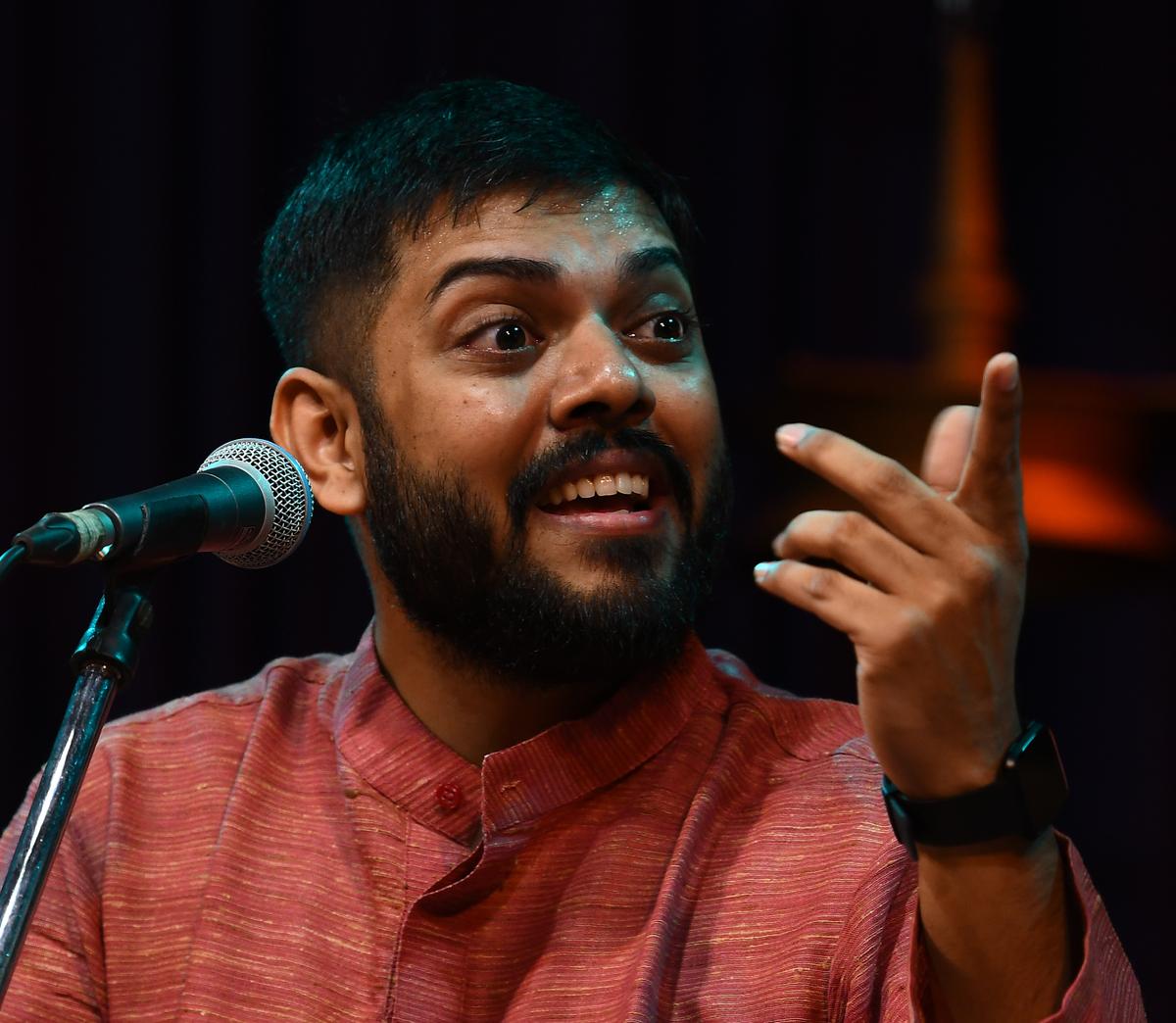An idol of Lord Ganesha
| Photo Credit: R. Shivaji Rao
The annual Ganesh Chathurthi or Vinayaka Chaturthi, is a grand spectacle that goes beyond its religious realms and celebrates unity among people from different cultures and traditions. This year, it is celebrated on September 7. Adding to the festive spirit is the musical element. Other than devotionals and bhajans, there are innumerable kritis, composed by the vaggeyakaras, extolling Ganesha. Each one is unique in its own way. The lyrical content, ragas chosen, intricate swara patterns, melody and the tala make these compositions special. And quite a few of them are marked up as favourites in the playlist.

Rithvik Raja.
| Photo Credit:
K. V. SRINIVASAN
Young Carnatic vocalist Rithvik Raja shares his most favourite five kritis on the deity, composed by Muthuswami Dikshitar, and explains what makes each of them special.
“The beauty of this selection is that Dikshitar has envisioned these compositions in diverse ways and with finer nuances. With great melodic insight and lyrical beauty, each of these compositions stand out in their own special way,” he says.
A Tanjore painting of lord Ganesha.
| Photo Credit:
The Hindu Archives
Vatapi Ganapatim: This composition has grown on me over time, especially after I learnt the Sangita Sampradaya Pradarshini Version. The melodic graph moves through the raga quite spectacularly with breathtaking Jaarus and Swaraksharas, that are not seen in the pop version that is famous today. It offers an entirely unique perspective of Hamsadhwani.
Pancha Matanga Mukha Ganapatina: This composition in Malahari, is a testament to the idea of beauty in simplicity. Malahari receives expert treatment and gives us new insight into the possibilities within this Raga.
Hastivadanaya: This raga, like Navaroj, has a distinct gait and texture. Dikshitar has chosen words that match this melodic texture, thereby giving us descriptive lyrics with expressions and usages that are not so often heard in the context of Ganapati. But that’s what makes this composition special, in the way the Sangita and Sahitya come together to give us a very dynamic, yet complete picture. The way he has infused the raga mudhra is a special feature here.
Sri Muladhara Chakra: Dikshitar has explored Shri Raga, in which this compositions is set to, in myriad ways to highlight its beauty. The way he handles the Nishadam is especially magnificent in this composition. While most Ganapati compositions tend to be descriptive or literal in nature, this is one of the very few compositions that explore the philosophy of Vedanta behind the form of Mahaganapati. This is also the only Shri Raga exploration by Dikshitar that does not engage the unique PDNP phrase, which makes it all the more curious and endearing.
Mahaganapate Palayasumam: A quaint song in raga Natanarayani, this one is very close to my heart, because this is the first song that I learnt from my guru T.M. Krishna. Though the composition is short, it offers a distinct picture of a raga like Natanarayani that still has its own indivi0dual flavour, but also gives us a suggestion on how much it can be expanded.
Each of these compositions are truly a masterpiece, and gives us a unique insight into the myriad forms of Mahaganapati in all his glory!
Published – September 05, 2024 06:27 pm IST